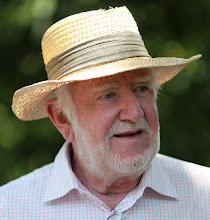We engineers tame the forces of nature. We improve the human condition by our work. But we are human ourselves. Sometimes we fail.
All are chastened by the recent events in Japan. How was it possible for whole towns to be swept away before our very eyes? How could the model of a modern high-speed railway have disappeared with all its passengers? Or a cruise liner with its hundred tourists? What was a fishing boat doing, sailing across the fields and overtaking a doomed pantechnicon? How could a nuclear reactor have had its safety compromised, threatening to contaminate the region with radioactivity?
Japanese engineers have mastered earthquakes to a high degree. Tokyo emerged essentially unscathed from a tremor 8 000 times stronger than that which levelled Christchurch only a few weeks before. Yes, the high rise buildings rocked and rolled, but they did not collapse. The nuclear reactors went into a safe shutdown, just as they were supposed to. But power lines and many other services failed, so there is more work for the engineers to do, to make the infrastructure earthquake proof.
The real problem was the tsunami. We did not understand its possible magnitude. We had not realized that Aceh was merely a sneak preview. We had forgotten that, in 1883, Krakatoa caused waves 35m above normal sea level. In 1958, at Lituya Bay in Alaska, a wave reached 516m as a result of a landslide triggered by an earthquake of magnitude 8.3.
And you should not think that it is only around the Ring of Fire, the shores of the Pacific, that tsunamis strike. In 1751, an earthquake destroyed Lisbon, and the ruins caught alight. The citizens fled to the banks of the River Tagus to avoid the blaze. An estimated 20 000 died when the tsunami roared up the river.
Japan has already spent billions of dollars on anti-tsunami seawalls. They line at least 40 percent of its coastline and are up to 12 meters high. However, the March 11 tsunami washed over the top of many walls, and caused some to collapse.
Critically, it washed over the seawall at Fukushima Daiichi, a nuclear power plant. When the earthquake struck, the reactors were immediately shut down. The earthquake broke the power lines, but the emergency generators kicked in to keep the essential cooling water flowing. But 55 minutes after the earthquake, the tsunami arrived, flooded the generators for four of the six reactors, and stopped the cooling of those reactor cores. Two of the staff, who were presumably outside the reactor buildings at the time, have disappeared.
The seawalls held the tsunami at bay at the remaining two of the Fukushima Daiichi reactors, at the four Fukushima Daini reactors next door, and at the three Onagawa reactors further up the coast, even closer to the centre of the earthquake. All these reactors shut down safely, the emergency generators kept functioning, and they will almost certainly be started up again.
All four of the reactors that lost emergency cooling have suffered catastrophic damage. There has been some release of radioactivity into the surrounding environment. The release has been far less that at Chernobyl, which in turn was far less than the radioactivity spread around the globe by the atmospheric testing of nuclear weapons in the 1950’s and 1960’s.
The catastrophic damage was caused by explosions of gaseous hydrogen. Many metals react with water when they are very hot, and the reaction produces hydrogen. This caused a build-up of pressure in the reactors. The operators took the decision to reduce the pressure, by releasing the gas along with some radioactivity into the secondary containment building. The hydrogen-air mixture then exploded and destroyed the secondary containment.
It is a miracle that no-one was killed in these explosions. When the building round Reactor 1 exploded, four people were injured, none seriously. When the hydrogen from Reactor 3 blew up, eleven were injured, one of whom had to be hospitalized. None were injured in the explosions that destroyed the buildings around Reactors 2 and 4. To prevent build-up of hydrogen in the Reactors 5 and 6, the owners have improved the ventilation of the secondary containment.
The workers trying to bring the plants under control are being exposed to significant quantities of radiation. The Japanese Government has just raised the limit to 250 millisieverts per worker. To put this in context, most of us are exposed annually to about 5 millisieverts from natural sources. A single whole-body dose of 5 000 millisieverts will kill half the population, but the death rate falls off rapidly below that level. It is unlikely that any of the workers will suffer serious consequences from their exposure.
The radioactivity that has been released is detectable in food grown within 30km of the failed reactors. The activity is primarily that from the iodine isotope I131, half of which disappears every 8 days. The releases are dropping as cooling is restored, which means that the food grown in that region will be safe within about 2 ½ months, if no further significant releases occur.
At this stage, the only deaths that have occurred at the damaged reactors appear to be those who were swept away by the tsunami. This is the essential message. We should be absolutely terrified of tsunamis. They are far worse than earthquakes, in the loss of life and destruction of property they cause. They are far, far worse than any nuclear disaster.
We engineers have to learn from our mistakes. We need to bolster our defenses against tsunamis. We can now do a pretty good job of designing against earthquakes. And the recent events have shown that most nuclear reactors can survive that greatest of cataclysms called a tsunami. Some reactors were compromised, but the fix is obvious.

